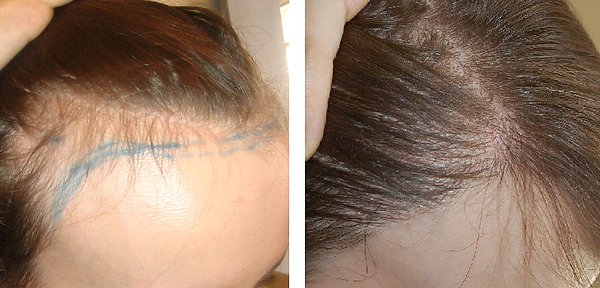Hair loss doesn’t discriminate. It affects millions of men and women worldwide—often with emotional and psychological consequences. Whether it’s thinning hair, a receding hairline, or visible patches due to alopecia or scarring, many individuals are turning to Scalp Micropigmentation (SMP) for a reliable and realistic solution. But who actually benefits most from this procedure?
In this guide, we break down how SMP helps both men and women, the specific types of hair loss it addresses, and what patients should know before considering treatment.
What Is Scalp Micropigmentation (SMP)?
Scalp Micropigmentation is a non-invasive cosmetic tattooing procedure that replicates the appearance of hair follicles. Specialized pigments are deposited into the scalp using microneedles, creating a natural illusion of hair density.
SMP does not regrow hair—instead, it enhances the appearance of fullness or a clean-shaven style, depending on your needs and existing hair.
SMP for Men
Common Hair Loss Types in Men:
- Male pattern baldness (androgenetic alopecia)
- Receding hairlines
- Crown thinning
- Post-surgical scars from hair transplants
- Patchy hair loss from alopecia areata
Why SMP Works Well for Men:
- Recreates a natural buzz-cut or shaved look for men with significant baldness
- Restores hairline definition for those with frontal or temporal recession
- Adds density to thinning areas for men who want to keep short hair
- Camouflages scars from FUT/FUE procedures or head trauma
Ideal Candidates:
Men who are comfortable with a short, closely-cropped hairstyle and want a permanent, low-maintenance appearance benefit most from SMP. It’s particularly effective for those who aren’t good candidates for hair transplant surgery or want to avoid ongoing medication.
SMP for Women
Common Hair Loss Types in Women:
- Diffuse thinning across the crown or top of the scalp
- Hair loss from hormonal changes (e.g., postpartum, menopause)
- Alopecia areata or traction alopecia
- Thinning due to stress, nutrition, or medical treatments (e.g., chemotherapy)
Why SMP Works Well for Women:
- Reduces scalp visibility by darkening the skin tone beneath thinning areas
- Creates the illusion of thicker hair without changing natural hair
- Boosts confidence without the risks or downtime of surgery
- Blends seamlessly with longer hairstyles, particularly along the part and crown
Ideal Candidates:
Women with visible scalp through thinning hair—especially in the central or frontal region—are often great candidates. SMP helps create a sense of volume, making it a strong option for those who don’t want to cut their hair short or undergo surgery.
Comparison: SMP Benefits for Men vs. Women
| Feature | Men | Women |
|---|---|---|
| Typical Hair Loss Pattern | Receding hairline, crown baldness | Diffuse thinning, widened part |
| Preferred Look | Shaved/buzz-cut appearance | Thicker, fuller look with longer hair |
| Goal | Restore hairline, simulate full scalp | Add density and scalp coverage |
| Common Conditions Treated | Androgenetic alopecia, alopecia areata | Hormonal thinning, stress-related loss |
| Number of Sessions | 2–3 | 2–3 |
| Visibility of Results | Immediate and bold | Subtle but impactful |
| Maintenance | Minimal (touch-up every 4–6 years) | Minimal (touch-up every 4–6 years) |
Who Else Can Benefit from SMP?
✅ Hair Transplant Patients
Those with visible scars or poor graft density can use SMP to enhance results or camouflage transplant scars.
✅ Alopecia Patients
SMP is especially helpful for people with alopecia areata, totalis, or universalis—restoring the look of a full head of shaved hair or blending with patches.
✅ Scarring or Burn Victims
SMP can blend scars or trauma-induced bald spots into the natural scalp tone for a seamless look.
✅ Chemotherapy Survivors
After regrowth or permanent loss post-treatment, SMP can help rebuild confidence with a fuller-looking scalp or natural hairline simulation.
Key Benefits of SMP for All Patients
- ✅ Non-surgical and low-risk
- ✅ Suitable for all skin tones and hair types
- ✅ Fast results with minimal recovery
- ✅ Affordable compared to surgical options
- ✅ Long-lasting (4–6 years before touch-up)
- ✅ Boosts self-esteem and confidence
What to Expect from the Procedure
- Consultation: Custom plan based on your hair loss type and desired outcome.
- First Session: Base layer of pigment is applied.
- Second Session: Additional layering and hairline detailing.
- Optional Third Session: Final touch-ups and density enhancement.
- Healing Time: 3–7 days with minor redness or flaking.
Final Thoughts: Is SMP Right for You?
Scalp Micropigmentation is a versatile and effective solution for both men and women suffering from hair loss. Whether you’re battling genetic baldness, stress-related thinning, or hair loss from medical treatment, SMP offers a natural-looking and confidence-boosting alternative to surgery or daily maintenance products.
It’s best for:
- Men seeking a shaved-head illusion or restored hairline
- Women with visible thinning and scalp exposure
- Patients who prefer non-surgical, low-maintenance solutions
Consult with a certified SMP specialist to determine the best approach for your individual needs and hair loss condition.




